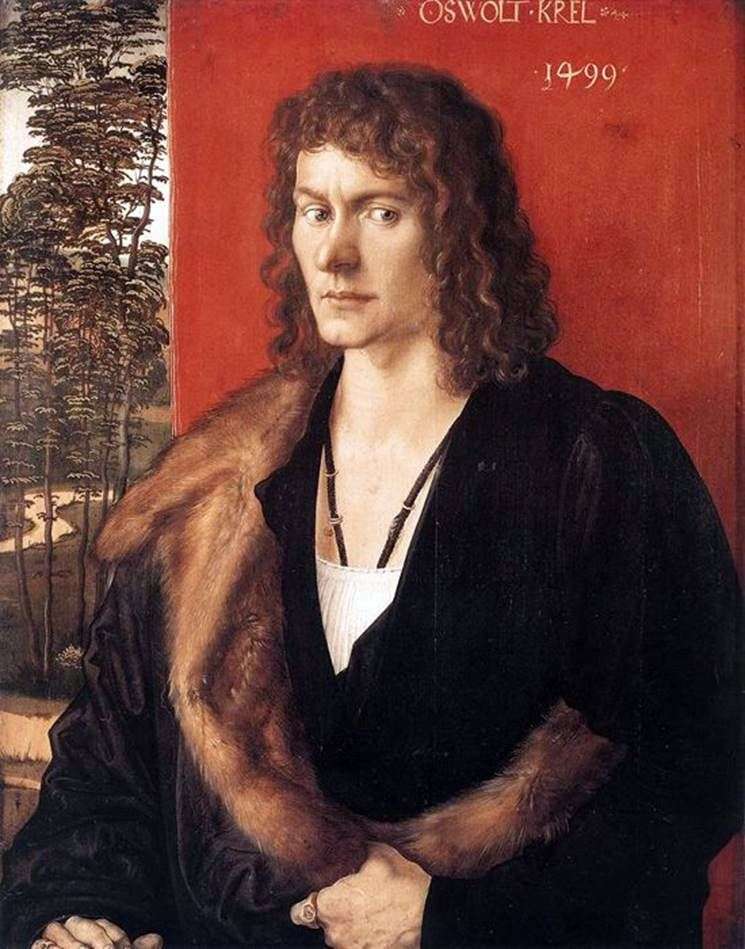
With the merchant Oswald Krell, the artist was familiar before, but really saw him only when Krell appeared in his studio, wanting to order a portrait. Durer saw before him a tall, thin man with sharp features of an irregular and unusually pale face. In the curved and shifted eyebrows, in the crease over the bridge of the nose, there was a tremendous internal tension that Krell was trying to hide. A great passion burned in his soul – a thirst for wealth, perhaps unquenched ambition.
Durer wrote Oswald Krell near an open window, so that the light falls on him from the side. It’s an overcast day. When Durer made a sketch, he immediately felt that his model could not sit still. Well, he will write to Krell, let his inner anxiety be felt. How tight is the hand that gripped the edge of the clothes! Even the veins swelled.
Durer did not write a room or furniture. Red behind Krell is not a material wall, but just a red background. He breaks off, revealing the view of the landscape. The landscape is not visible through the window, but as if through a wall. The artist does not see it, but sees it. A narrow meandering river, thin trees with slightly wavering branches.
There is no peace in the spirit of the man placed next to this clear landscape. He contradicts all his inner tension in the tranquil silence of nature. Durer kept struggling with Krell’s eyes, then he found it. They are directed to the side, to something that we do not see and what this person is gazing intently – young, rich, strong, but tormented by inner thirst, palimited by a spiritual flame.
The portrait, when he was ready, hit Krell. The artist saw in him something that he himself felt in himself is only unclear. The customer praised the similarity, was surprised by the art, paid off the artist and left, feeling the alarm in his heart. And Durer, before giving the portrait to the customer, wrote on top his name and set the date: 1499.
A remarkable date for this work! Durer wrote a portrait of a young German merchant, and painted a portrait of a stormy century, which ended, preparing to give way to a new, even stormier; wrote a portrait of Krell, and painted a portrait of the time, to which they belonged both – time at the break.


 (2 votes, average: 3.50 out of 5)
(2 votes, average: 3.50 out of 5)